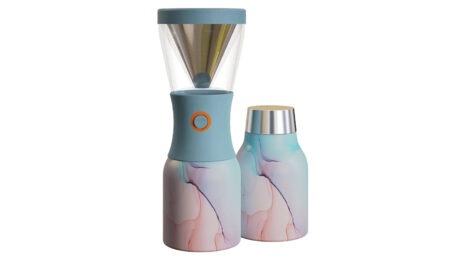Who knew? Only halotherapists, for centuries
The scolds of medical science are forever warning us off salt. As in their dire equation, too much salt equals high blood pressure equals heart attack. But did you know salt has been used for millennia to promote health? In fact, there’s even a name for this. It’s called halotherapy, from the Greek halos, meaning salt.
1. Palacio de Sal (meaning Salt Palace) is a hotel and spa in Potosi, Bolivia, where the walls and furniture are made entirely of salt.
2. Every cell in the human body contains salt. The concentration of salt in each of us—0.4 percent of body weight—is around the same as sea water’s.
3. The word “salary” comes from the Latin for salt (salis), most likely because Roman soldiers bought salt with the money they were paid.
Salt treatments trace to deep subterranean salt caves in Eastern Europe, where the air is bacteria-free and charged with negative ions, which even medical researchers concede can increase levels of serotonin, relieving stress and elevating mood. (Ever notice how your spirits rise as you walk an ocean beach? It’s not just the sand between your toes.) Monks sang the praises of deep breathing this cave air to alleviate skin ailments and respiratory problems. By the 1960s, halotherapy had ascended to sea level, as “salt rooms” in Europe. Their popularity grew and recently reached the United States, often in spas.
Today’s salt treatments at spas recreate the microclimate of natural salt caves by “precisely infusing pure salt as microscopic breathable particles and negative ions into the air.” That’s how the process is described at Hoola Spa at Sheraton Kona Resort & Spa at Keauhou Bay, in Kailua-Kona on the Big Island of Hawaii, which has the first salt room on the island. At this, and most, halotherapy rooms, a salt vaporizer pumps dry, pharmaceutical-grade salt into the room, which is typically coated in layers of salt. The ceilings often mimic natural salt caves, with stalagmites of rock salt—usually ancient halite from Pakistan, commonly known as Himalayan pink salt.
An American mainland hotel spa that offers similar treatments is The Spa at Aria in Las Vegas, which has the Shio Salt Room. Shio is a rare “powder salt”—Guinness World Records calls it the richest mineral salt in the world—that is harvested on the small Pacific island of Mijakojima in southern Japan. Clean sea water is evaporated in a complex process to create the shio salt. A wall of the Shio Salt Room is lined with shio salt bricks, which are complemented by salt lamps, vibration therapy and radiant music. Guests are urged to fill their lungs with the salty air to enjoy respiratory benefits.
Yet Hoola Spa, on the hotel’s website, extols the virtues of this restorative, relaxing, aesthetically pleasing treatment most enthusiastically: “In the world of physical healing, all forms of halotherapy are said to ease the symptoms of asthma, allergies, migraines and seasonal affective disorder (S.A.D.), correct chemical imbalance, fight infection in the body and bring down fever, cleanse toxins from the cells and tissues of the body, and combat illness and/or a range of disorders of the lungs, skin and nervous system.”
Whoa. All those good outcomes could send even Jimmy Buffett in a scramble for his lost shaker of salt.
Read more about the rise of saltwater pools.



